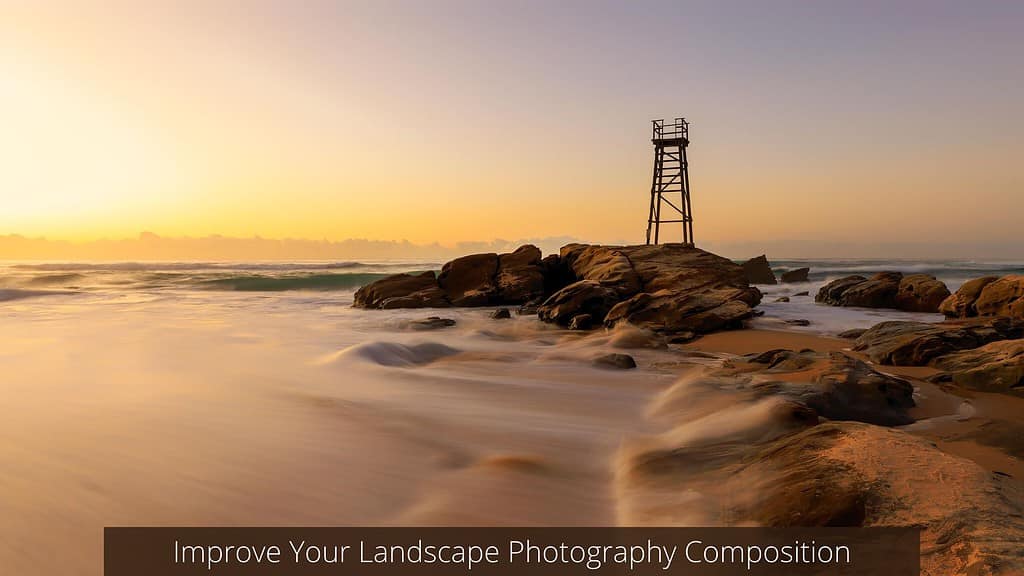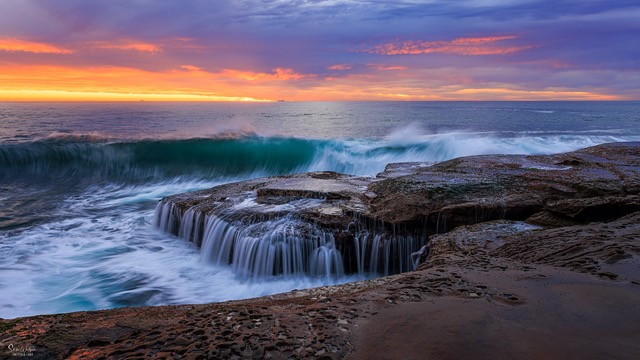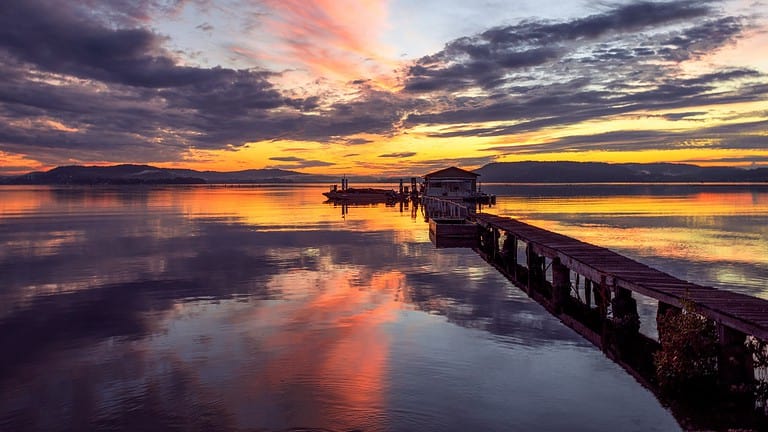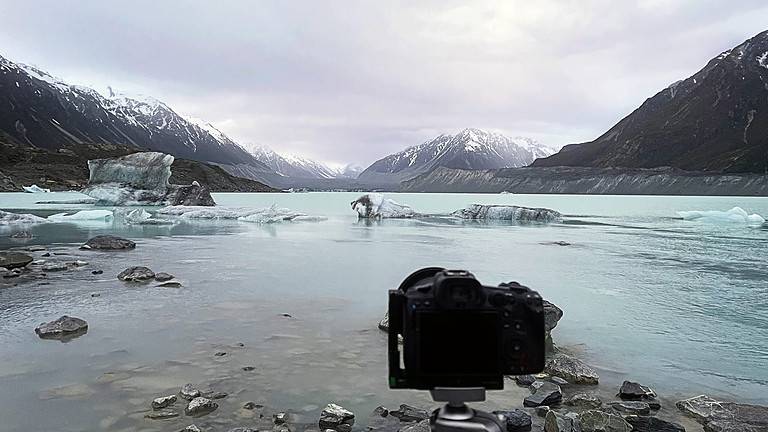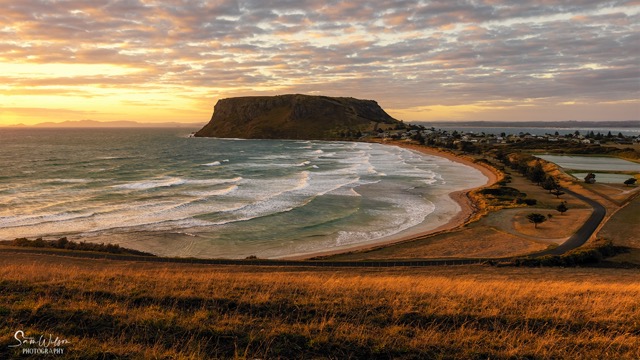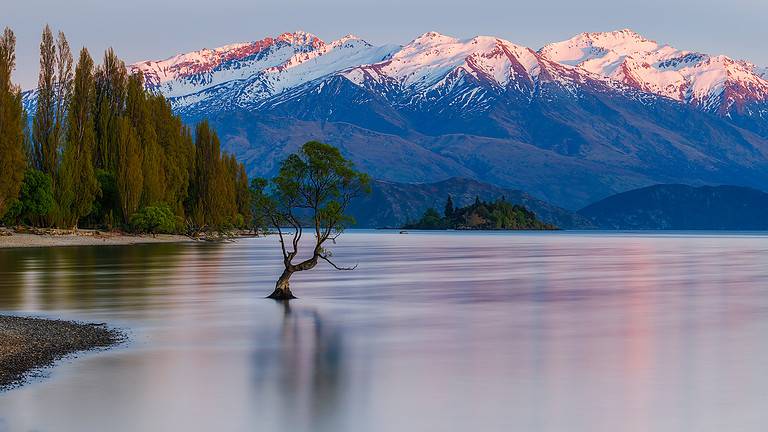Frame Within A Frame: Easy Ways To Improve Your Composition
This article is all about the composition technique of a frame within a frame in landscape photography, and how to use it to improve your compositions.
Landscape photography is all about presenting what you see in a way that resonates with the viewer, and the frame within a frame technique is a great way to improve your storytelling.
The use of frames within frames can enhance the most mundane scene and draw the viewer’s attention to the main subject.
You can also add depth and context to your imagery by doing this.
It’s not complicated, but it’s like an old friend that you can count on more often than you might imagine.
In this article, we’ll look at how you can use framing in your landscape photography and get you started on improving your composition.
Want a deep dive into exposure?
I wanted to share a special freebie for you if you’re also new to photography.
It’s my FREE Exposure Quick Start Guide designed to get you started in your journey by learning the elements of exposure and start taking better photos – Fast!
A Note on Composition
Just before we get into framing specifically, I just wanted to touch on how important composition is in landscape photography.
Composition is basically where you place the elements of your scene in your photo. It’s one of the key ingredients to telling a story with your image.
To quote Photography Life, Composition is “simply the arrangement of the elements in your photo.”
It’s often argued whether light or composition is more important for making compelling images, and there’s no simple right or wrong. As far as I’m concerned, both are game changers when it comes to taking an image from ok to great.
You can have great light, but you’re not telling a story with your composition, then the image will just be ok.
The same with composition. You can’t always be photographing with great light, but you still can make a compelling image with your composition.
It’s one thing to have a photo that’s perfect from a technical perspective. Your image can be well exposed, and you have an interesting subject, but it’s the composition that can have a huge visual impact.
There are various compositional techniques that you can either use alone or combine for more interesting images. This article focuses specifically on framing, but check out this article for more composition tips and techniques:
So, back to using framing in landscape photography …
What Is The Frame Within A Frame Composition Tool
While you ‘frame’ every photo when you are taking shots, here I am referring to composing a photo where you place your subject within a ‘frame’ inside your image.
By using frame within a frame in your landscape photography, you are using a composition technique that helps you direct your viewer’s attention directly to your subject.
You can use a number of different natural elements to frame your composition such as trees, mountains and valleys, along with man made objects including architecture, fences, bridges and arches etc.
Opportunities to use framing in your landscape photography are literally everywhere!
Composition is one of the key foundations to focus on when first learning photography. This is because having an interesting composition can really transform your images.
Why Using Frame Within A Frame is Effective
The purpose of using a frame is to draw the viewer’s eye to what you are trying to highlight, but it also has the added bonus of making your photo more interesting. In short, it makes for a more compelling image.
By framing your subject, you also provide a strong foreground element to enhance your composition’s visual impact.
Using frames in your composition also helps to create a sense of depth into your photos. This is a real bonus in your photography as it helps to give a three dimensional effect into your two dimensional image.
Let’s look at the 3 main reasons to use this technique in your photography.
1 – Direct The Viewer’s Eye To The Main Subject
The main purpose of using a frame within a frame is to lead the viewer through your image in either a specific direction, or towards your main subject.
In the image below the trees that are framing the building are also acting as leading lines to draw the viewer to look through to the old building.
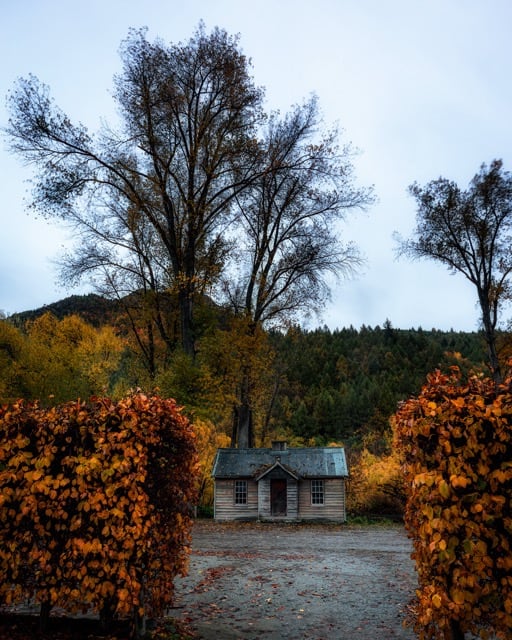
2 – Give The image A Unique Context And Perspective
A real benefit of using framing in your composition is that it can put a unique twist on what would otherwise just be an average image.
For example, using natural frames like leaves and trees will help you place the subject in your scene and help visually describe the area that you are in.
In the example below this could have just been an image of a lighthouse. But by shooting it from inside the ruin of the original keeper’s building it gives a unique slant and context to the image.

3 – Provide Depth In Your Image
Perhaps the best reason of all is to give your image depth.
By depth I mean giving the illusion of a three-dimensional view in a two-dimensional photograph.
This helps to engage the viewer to actively explore the scene instead of just observing it, as depth makes your image more interesting.
One simple way to do this is like the example below. In this image there are multiple frames within the photo.
Each level of the building is a frame within the level above it until you get to the shoppers at the bottom level.
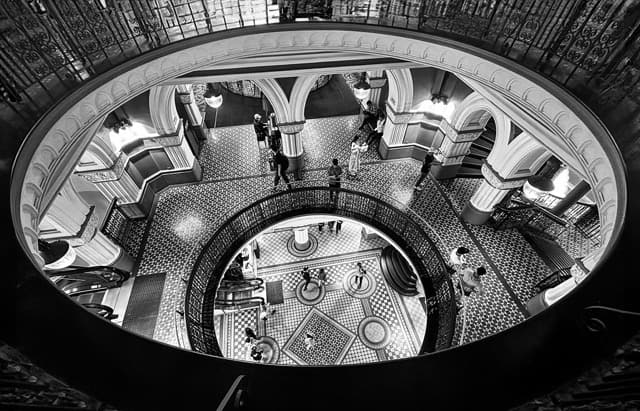
Examples Of Frame Within A Frame Compositions
Using Natural Elements In Framing Your Landscape Photography
Nature generously provides us with many options of natural frames to use in your landscape photography.
Some of these elements include mountains, trees, branches, rocks, and riverbanks are just a few to get you started.
Here are a couple of examples:


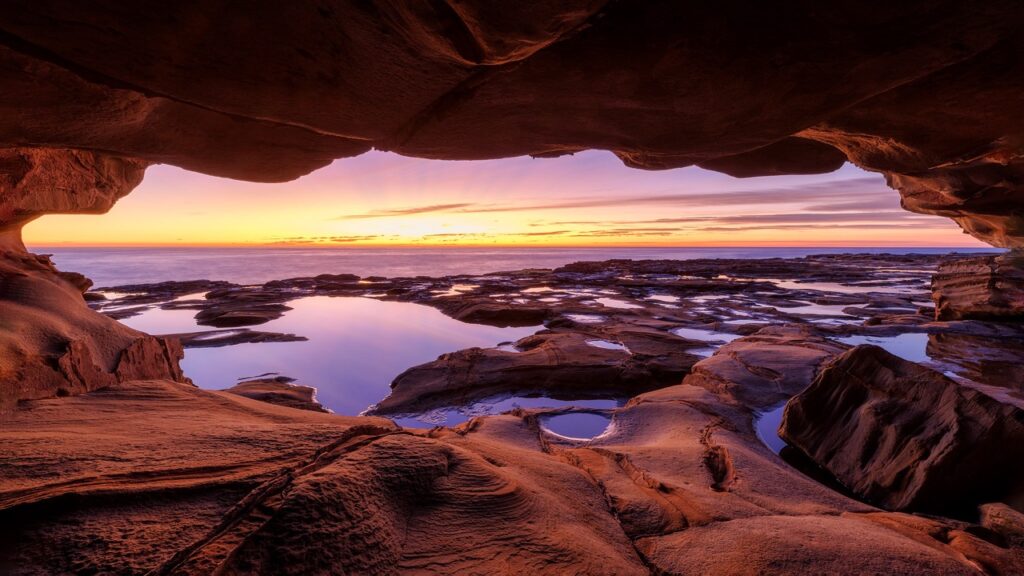
Man Made Framing To Enhance Your Landscape Photography
Utilising man made objects or structures is a great way to add depth, contrast and interest to your photos.
Elements such as windows, buildings, doors, fences, arches, bridges, tunnels – the list really is endless – all can be used to make a frame inside your photos:
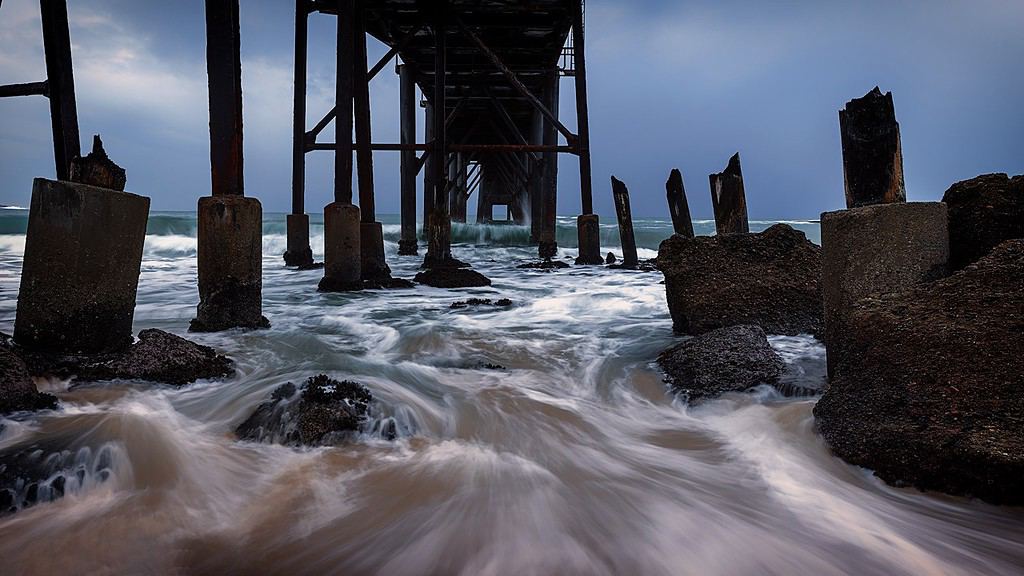

Frames truly are everywhere once you start looking for them.
Using Light And Shadow As A Framing Tool
Frames don’t just have to be physical objects.
Pockets of light and shadow can also act as frames. If your subject is in a patch of light surrounded by shadow, the shadow becomes your frame.
Similar to this is a technique known as vignetting you can apply in your post-processing.
By applying a vignette you draw the viewer’s eye from the edges of your frame to the subject.
The same goes with using a shallow depth of field. This shallow depth of field can be because only the main subject is in focus and the rest blurred. That is your framing.
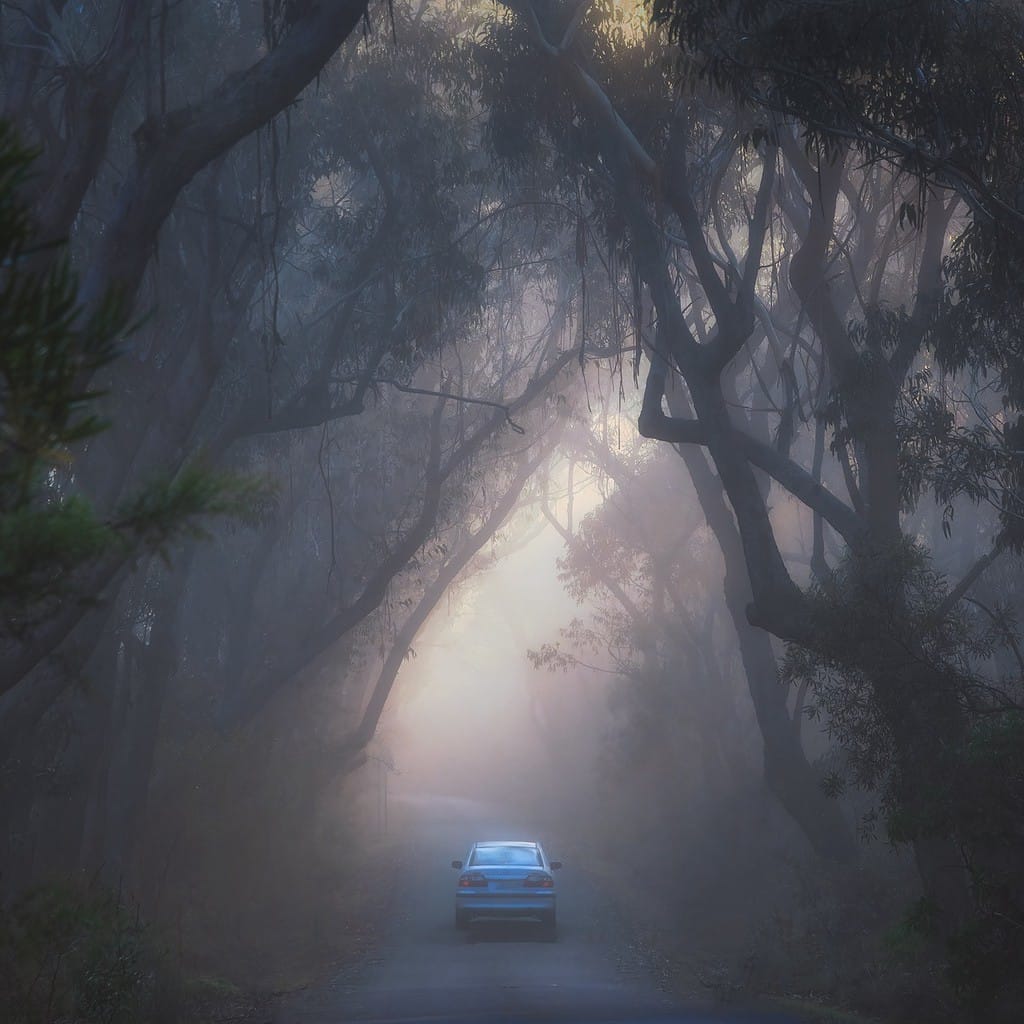
Full or Partial Framing Can Both Work
When thinking about framing, note that it doesn’t have to be a complete frame surrounding your subject.
In the image below it’s just a corner and yet it still frames the old jetty and leads the viewer’s eye to where the main subject is.
Frames can also be curved, honestly anything can be used to form a frame – as long as it is used for a purpose and makes sense in your image.

One thing to make sure of though – when using the framing technique, make sure that your main subject is sharp and in focus.
As this is the ‘hero’ of your image, and where you’re directing your viewer’s eye, it needs to be super sharp.
Final thoughts
So, this article was all about using a frame within a frame to improve your landscape photography – i truly hope it has given you some inspiration.
Just like using the Rule of Thirds, Leading Lines, and many of the compositional tools you will learn about, a frame within a frame is just that, a tool.
But having this tool in your kit is a great one to add to your knowledge kit, and it’s pretty easy once you start seeing them.
There are a number of ways and no hard and fast rules when it comes to incorporating framing in photography.
Also note that it’s not used only in landscape photography, it’s a technique that can be used in all genres of photography.
So start looking around to see where you might be able to incorporate framing into your images.
That’s it for now – Keep clicking and sipping 📷 ☕ 🍷
Like this post? PIN it so you can save it for later
Other Helpful Landscape Photography Composition Articles:
- Improve Your Landscape Photography Composition
- Landscape Photography Composition: How to Use the Rule of Thirds
- Landscape Photography Composition: The Power of Leading Lines
- Layers and Foreground Interest In Landscapes For Better Photos
Don’t miss a post – sign up Here if you haven’t already
Are you a beginner landscape photographer looking to improve your skills and capture stunning photos of nature?
If so, “The Landscape Photography Handbook – Exploring the Wonders of Nature” is the perfect guide for you.
In this 90-page ebook, you’ll learn everything you need to know to get off auto mode and start using manual settings to capture stunning photos of nature.


